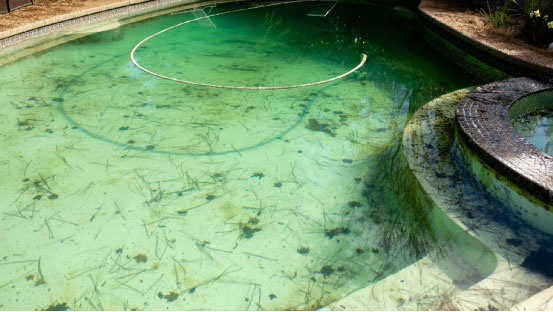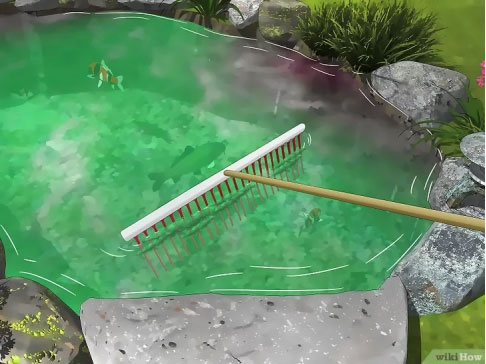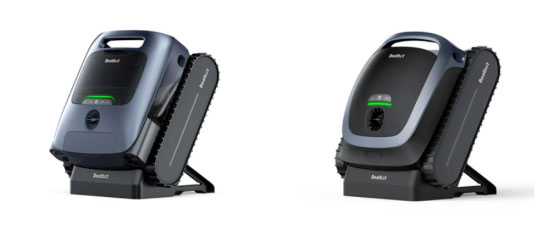1. Types of Pool Algae
There are various kinds of algae found in swimming pools, all of which have their own characteristics. Green Algae thrive in warm, nutrient-rich water and are the most common type: if you’ve ever seen a pool that looks cloudy with green patches or a slimy green coating on surfaces, you know what this stuff can do. Yellow Algae (or mustard algae) is often found in shady areas—behind ladders or steps, for example—and it’s not easy to get rid of either because its spores can lay dormant for so long. Black Algae has roots that bury deep into plaster and other rough surfaces. This makes it very well attached and brushing alone will not take it off. Blue-Green Algae (which is actually a type of bacteria called cyanobacteria) can be harmful to humans and discolor water at times but does not usually present any serious health risk by itself—from an article titled “How to Identify Common Pool Algae Types and Kill Them!”
2. Seasonal Occurrence and Identification
Algae thrive when conditions are right, such as in spring and summer with longer days, more sunlight and warmer weather. If a pool doesn’t have good filtration system or if it isn’t looked after properly – meaning things like making sure the water is moving around enough so that all parts of the pool are cleaned regularly – then there will be even bigger problems at these times of year! So how do you know if there is an issue? Well changes to its appearance could be one sign: maybe it becomes less clear or changes colour… It might also feel slimy when touched which indicates algae growth (The science bit: ‘Slimy’ refers specifically to those organisms called cyanobacteria; when conditions suit them Black algea colonies can form stubborn patches; yellow ones are caused by another type known as diatoms).
3. Health Effects of Pool Algae
The thing about having too many green microorganisms in one’s backyard swimming pools is they may cause a variety of health issues – none of which are good. Additionally, the algae have been known to house bacteria which can infect a swimmer’s ears or cause a rash; P. parvum itself may even trigger an allergic reaction. Of still greater concern are bugs like Cryptosporidium: first recognised as a human pathogen in 1976, Crypto has now been found in at least 20 species of wild and domestic mammals. As few as ten of its eggs can cause disease. Cyanobacteria, also known as Blue-Green Algae are the worst type and can be harmful to swimmers health! Toxin-producing this algae may cause skin irritation/rash – plus other issues such as upset stomachs if ingested (accidentally swallowing some water), nerve damage or liver problems. A safe pool depends on using equipment like pool robots alongside regular care checks including balancing chemicals nicely so these bacteria don’t stand a chance of flourishing.
4. Common Locations for Algae Growth in the United States
In the United States, algae growth is a major problem across all states. It’s especially bad in areas that get lots of sun and are warm — like southern states and those in the Southwest. Places such as Arizona, California, Texas and Florida can have serious algae outbreaks. These states have mild winters along with long hot summers which make them perfect for algae to grow out of control. Coastal areas also have this issue because they tend be very humid; for example even with all its breezes California deals with algae too — just ask anyone who surfs there regularly!
Algae growth in pools can be an issue in the summertime when it gets hot – even up north. It’s even more of a headache if you live in a city with lots of pollution or there’s stuff like leaves falling into your pool. That’s because algae feed on nutrients in water from these sources; they make food for the algae! If proper care isn’t taken; including regular cleaning along with using covers plus advanced technology such as robotics there will be problems.
5. Traditional Methods for Cleaning Algae
One common yet effective way to get rid of algae in pools is by using traditional techniques: scrubbing stuff off by hand, adding chemicals and making sure the filter system works properly. Scrubbing with a pool brush is really important because it helps remove algae that has attached itself to walls, floors or steps – just like when you scrub dirt from under your fingernails. Afterwards there are various chemical treatments available such as chlorine “shock” treatment plus algicide(s) and pH adjusters which kill any remaining algae cells (or spores) and stops them coming back again soon!
To improve the effectiveness of destroying algae cells, various algaecides can be used alongside chlorine; each type available has been designed specifically with this task in mind. If algae are killed off successfully it then becomes necessary to maintain chemical equilibrium in pool water—addressing both alkalinity levels as well the pH factor—to lessen the likelihood of future outbreaks and increase any preventative treatment’s ongoing success rate.
It is also important to properly filtrate and circulate the water if you want to control algae like people have done for years. Water passes through a pool’s filter where things such as bits of dirt along with algae spores are removed – so it makes sense to run it long enough each day. The system that pumps water around (the circulation system) must be in good working order plus filters need to be kept clean. These methods do work but need regular input if your aim is having clear water that’s free from algae; effort has to be put in frequently.
6. Advanced Technology for Algae Removal: Beatbot Aquasense Pro Pool Robot
In the realm of eliminating swimming pool algae, new technology has led to some groundbreaking advances. For example, the Beatbot Aquasense Pro Pool Robot represents a whole new way of managing pool algae – through innovation! This system is so effective because it takes care of everything automatically (you don’t have to do much yourself). In fact, using this kind of product can reduce traditional hard work when it comes to looking after your pool system as though there were no tomorrow.
The Beatbot Aquasense Pro comes with strong scrubbing brushes and high-level suction power, making it highly effective at eliminating algae from any pool surface: whether that’s the walls or floor of your pool; the waterline, even if there is water on them or just in general — plus with its smart navigation system there won’t be many missed spots when compared to how well people can clean manually.
Using innovative sensors, the Beatbot Aquasense Pro has a unique feature that allows it to map pools and adjust its cleaning patterns and strength based on what it detects. This means the robot doesn’t just clean reactively (ie when there’s visible dirt or algae) – instead, it can stop these things from even taking hold.
Moreover, with the Beatbot Aquasense Pro you’ll use fewer chemicals. Because this robot sticks to a steady cleaning routine so algae won’t get a grip — meaning you won’t have to (chlorine and algaecides) nearly as often. It’s greener pool maintenance that also makes sense from a safety perspective: less nasties in the water equal healthier swimming for everyone!
7. Conclusion
Summarized, the latest in algae-fighting tech is the Beatbot Aquasense Pro pool cleaner. It’s both efficient and earth-loving – plus it works hard so you don’t have to! This nifty little robot keeps your swimming hole so clear that harmful organisms can’t gain a foothold (or flipper-hold) and make you sick.



One Comment
I can’t express how valuable this post is! The level of detail and thoughtful explanations demonstrate your mastery of the subject. Truly a goldmine of information.